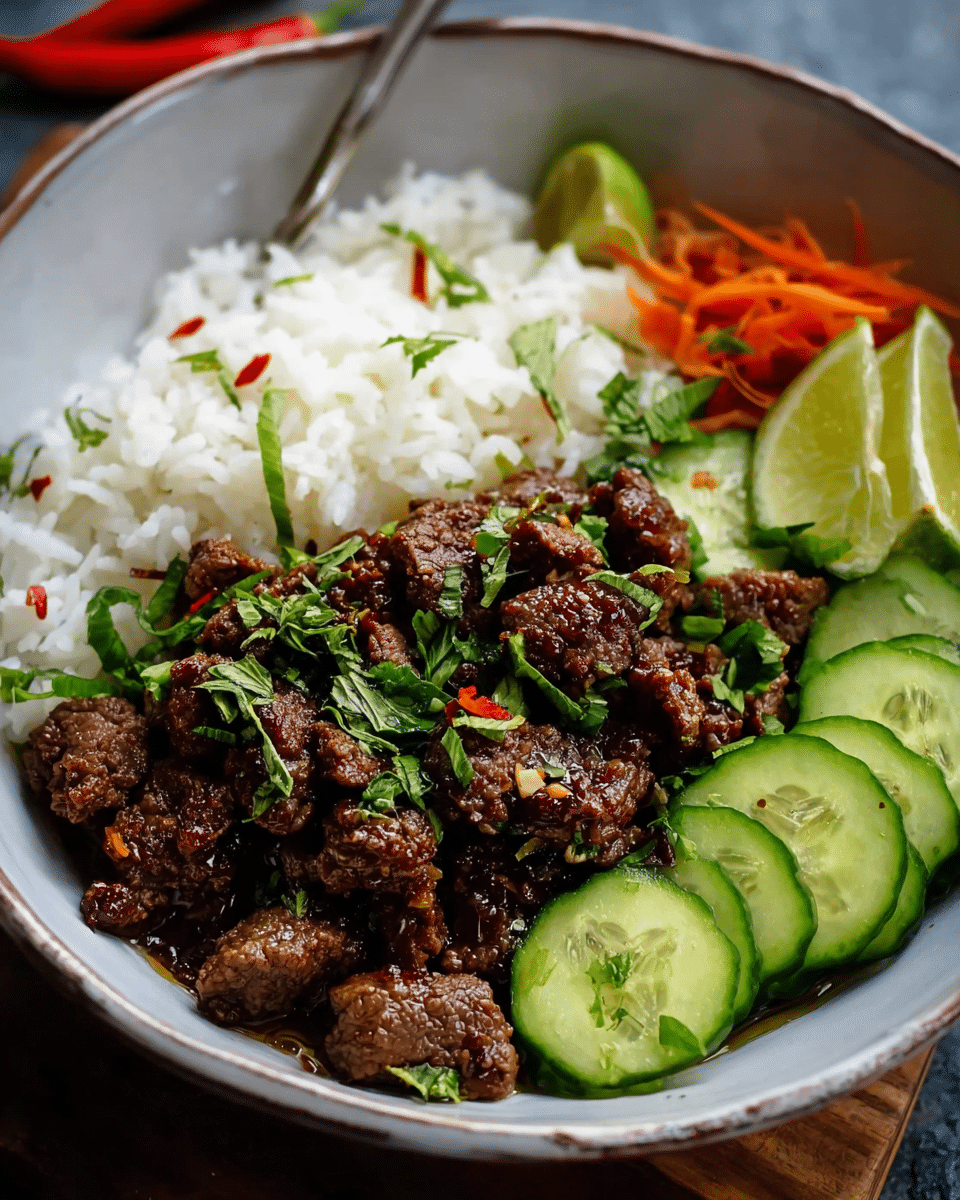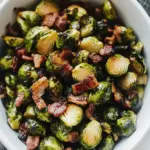The Role of Caramel in Vietnamese Cooking
Caramelization is a technique that plays a significant role in many Vietnamese dishes, and it’s particularly prominent in the preparation of caramel beef. The process begins by melting sugar with water, which slowly transforms into a rich amber syrup. This caramelized sugar provides the foundation for the sauce, creating a deep, rich sweetness that complements the savory elements of the dish.
What makes Vietnamese caramel sauce unique is the use of palm sugar. Palm sugar has a distinct flavor, slightly less sweet and more earthy compared to regular white sugar, which helps create a more complex sauce. The caramel’s sweetness is balanced by the addition of fish sauce, which introduces a salty, umami quality that contrasts beautifully with the sugar. This combination of sweet and salty is a hallmark of many Vietnamese recipes, and it’s what makes caramel beef such a delightful dish.
The Importance of Fresh Herbs
One of the key features of Vietnamese caramel beef is the addition of fresh herbs, which elevate the dish and add a burst of color and flavor. Herbs like cilantro, basil, and mint bring an aromatic freshness that helps cut through the richness of the caramelized sauce. Each herb offers its unique flavor profile, with cilantro adding a citrusy note, basil providing a slightly peppery taste, and mint contributing a cool, refreshing element.
The herbs are added toward the end of cooking, allowing them to maintain their bright, fresh flavor. They also serve as a garnish, enhancing the dish’s presentation and adding a textural contrast to the soft beef and the velvety caramel sauce. The combination of these fresh herbs creates a dish that is not only flavorful but also visually appealing, with the green colors of the herbs standing out against the rich brown of the caramel beef.
Balancing Sweet, Salty, Spicy, and Sour Flavors
Vietnamese cuisine is known for its ability to balance multiple flavors in a single dish, and caramel beef is a perfect example of this. The sauce is a harmonious blend of sweet, salty, spicy, and sour elements that come together to create a rich and well-rounded flavor profile.
The sweetness in the dish comes from the palm sugar, which, as it caramelizes, infuses the sauce with a rich, syrupy flavor. This sweetness is balanced by the saltiness of the fish sauce, which provides depth and umami. The addition of bird’s eye chili brings a spicy kick, offering heat that contrasts nicely with the sweetness of the caramel sauce. Finally, lime juice and zest add a bright, tangy element to the dish, cutting through the richness and offering a refreshing finish.
This balance of flavors is what makes Vietnamese caramel beef so addictive. The interplay between sweet, salty, spicy, and sour creates a well-rounded dish that keeps your taste buds engaged, with every bite offering something new.
The Significance of Fish Sauce
Fish sauce is a fundamental ingredient in many Vietnamese dishes, and it plays a pivotal role in caramel beef. Made from fermented fish, fish sauce has a distinct, pungent aroma and a salty, umami flavor that is crucial to the dish’s depth. In Vietnamese cooking, fish sauce is used to season meats, vegetables, and sauces, adding a savory base note that enhances the other flavors in the dish.
In caramel beef, the fish sauce is combined with the caramelized sugar to create a savory-sweet sauce that coats the beef. The richness of the fish sauce melds seamlessly with the caramel, resulting in a complex and deeply flavorful sauce that is both salty and sweet. This is a perfect example of how fish sauce is used in Vietnamese cuisine to provide a foundation of umami and bring balance to the dish.
How to Serve Vietnamese Caramel Beef
Vietnamese caramel beef is typically served with steamed rice, which acts as a neutral base to absorb the flavorful sauce. The rice helps balance the richness of the caramelized beef, providing a light and fluffy texture that complements the savory, sweet sauce. The addition of fresh cucumber slices is a common accompaniment, offering a cool, crisp contrast to the rich beef. Cucumber also provides a refreshing crunch that helps cleanse the palate between bites.
Optional pickled vegetables, such as pickled carrots and daikon radish, are another popular addition. The tartness of the pickles adds a sour contrast to the sweetness of the caramel beef, creating a more complex flavor profile. The pickled vegetables also add color and texture to the dish, making it more visually appealing and providing an extra layer of flavor that enhances the overall meal.
This dish is versatile and can be customized to suit your preferences. For example, you can adjust the level of spiciness by using more or less bird’s eye chili, depending on your tolerance for heat. Similarly, if you prefer a sweeter or saltier sauce, you can easily tweak the amounts of sugar or fish sauce to suit your taste.
Nutritional Information
Vietnamese caramel beef is a rich and flavorful dish that is satisfying without being overly heavy. Each serving contains around 346 calories, with 22 grams of fat, including 8 grams of saturated fat. The protein content is substantial, with 20 grams of protein per serving, making it a great option for a fulfilling meal. The carbohydrates are moderate at 14 grams per serving, with 1 gram of fiber and 10 grams of sugar.
While the dish contains a fair amount of fat, much of it comes from the beef, which provides both flavor and texture. The fish sauce and herbs contribute minimal calories but offer significant flavor, making this dish both indulgent and balanced.
The Quick and Easy Nature of the Dish
One of the standout features of Vietnamese caramel beef is how quickly it comes together. With a cook time of just 20 minutes, this dish is perfect for busy weeknights when you want something flavorful but don’t have a lot of time to spare. The caramelization process is straightforward, and once the beef is added to the sauce, it cooks up quickly, absorbing all the delicious flavors from the caramel and the fish sauce.
The simplicity of the dish, combined with its depth of flavor, makes it an excellent choice for both experienced home cooks and beginners. The ingredients are readily available in most grocery stores, and the recipe doesn’t require any specialized techniques or equipment, making it accessible to anyone interested in trying their hand at Vietnamese cuisine.
Conclusion
In conclusion, Vietnamese caramel beef is a delicious and well-balanced dish that showcases the best of Vietnamese flavors. The combination of sweet, salty, spicy, and sour elements creates a rich and complex sauce that perfectly complements the tender beef. The fresh herbs and optional pickled vegetables provide refreshing contrasts that balance the richness of the dish. Quick and easy to make, Vietnamese caramel beef is a satisfying and flavorful meal that pairs wonderfully with steamed rice and fresh vegetables. Whether you’re new to Vietnamese cuisine or a seasoned cook, this dish is sure to become a favorite in your culinary repertoire.






